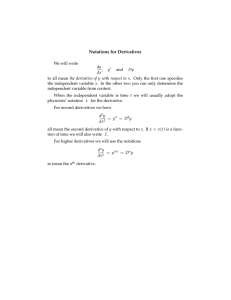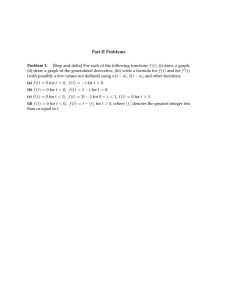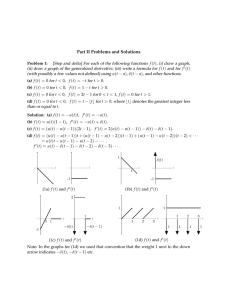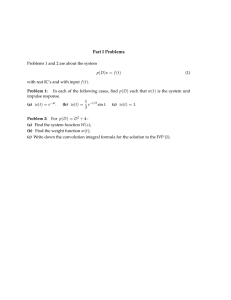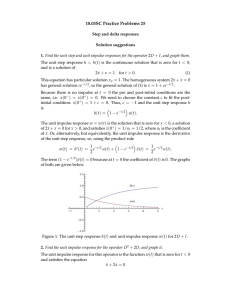Higher
advertisement
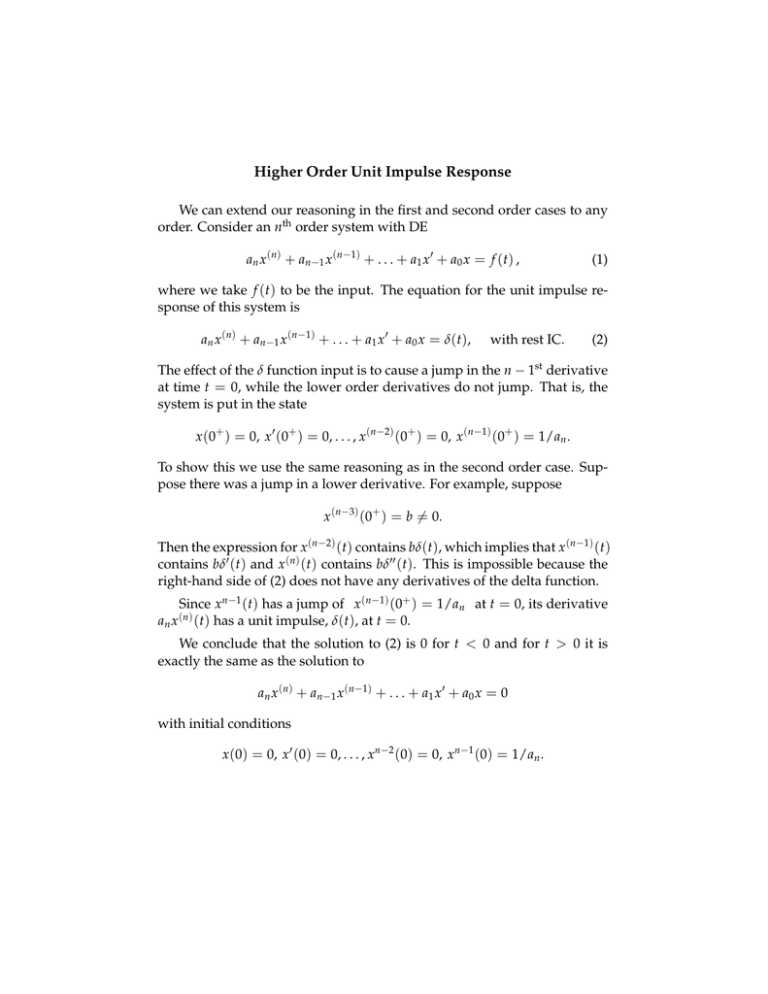
Higher Order Unit Impulse Response We can extend our reasoning in the first and second order cases to any order. Consider an nth order system with DE a n x ( n ) + a n −1 x ( n −1) + . . . + a 1 x � + a 0 x = f ( t ) , (1) where we take f (t) to be the input. The equation for the unit impulse re­ sponse of this system is a n x ( n ) + a n −1 x ( n −1) + . . . + a 1 x � + a 0 x = δ ( t ), with rest IC. (2) The effect of the δ function input is to cause a jump in the n − 1st derivative at time t = 0, while the lower order derivatives do not jump. That is, the system is put in the state x (0+ ) = 0, x � (0+ ) = 0, . . . , x (n−2) (0+ ) = 0, x (n−1) (0+ ) = 1/an . To show this we use the same reasoning as in the second order case. Sup­ pose there was a jump in a lower derivative. For example, suppose x (n−3) (0+ ) = b �= 0. Then the expression for x (n−2) (t) contains bδ(t), which implies that x (n−1) (t) contains bδ� (t) and x (n) (t) contains bδ�� (t). This is impossible because the right-hand side of (2) does not have any derivatives of the delta function. an Since x n−1 (t) has a jump of x (n−1) (0+ ) = 1/an at t = 0, its derivative has a unit impulse, δ(t), at t = 0. x (n) ( t ) We conclude that the solution to (2) is 0 for t < 0 and for t > 0 it is exactly the same as the solution to a n x ( n ) + a n −1 x ( n −1) + . . . + a 1 x � + a 0 x = 0 with initial conditions x (0) = 0, x � (0) = 0, . . . , x n−2 (0) = 0, x n−1 (0) = 1/an . MIT OpenCourseWare http://ocw.mit.edu 18.03SC Differential Equations�� Fall 2011 �� For information about citing these materials or our Terms of Use, visit: http://ocw.mit.edu/terms.
